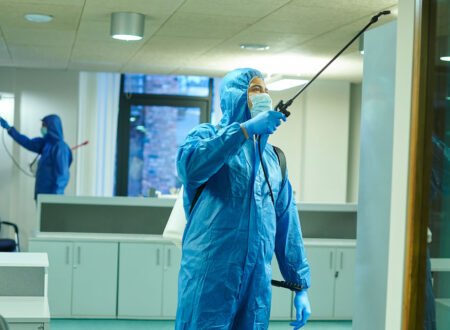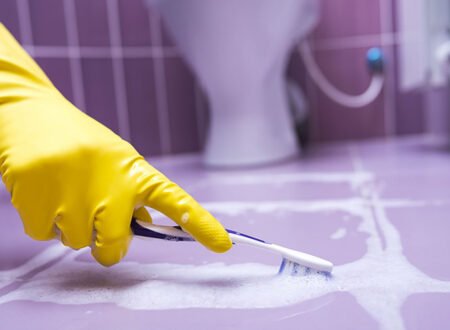This deep cleaning guide for museums and art collectors in Manchester is aimed at helping you not to only preserve and maintain your rare pieces but also safeguard our cultural heritage for future generations.
Following a professional deep cleaning guide will help you protect your artifacts from the damaging effects of dirt, dust, and contaminants.
Regular deep cleaning slows down deterioration and extends the lifespan of your precious artifacts and artwork.
In this guide, we will explore the significance of deep cleaning, techniques used to balance beauty and preservation, the need for thorough cleaning in hard-to-reach areas, tailored techniques for preserving beauty, the role of deep cleaning in safeguarding artifacts, and innovations that are revolutionizing deep cleaning practices in Manchester as well as globally.
Appreciating Deep Cleaning for Museum and Art Galleries
Deep cleaning plays a crucial role in the preservation and maintenance of museum and gallery collections. These collections are not only valuable in terms of their monetary worth, but they also hold immense historical and cultural significance in Manchester and the United Kingdom at large.
Dirt and dust may seem harmless, but they can cause significant damage to artifacts over time. Dust particles can scratch delicate surfaces, while dirt can attract moisture and promote the growth of mold and other harmful microorganisms.
You should also note that air pollutants can chemically react with the materials of the artifacts, leading to discolouration and degradation. By regularly removing these harmful substances, conservators can prevent irreversible damage to the artifacts.
Deep cleaning also allows art collectors to identify any existing damage or deterioration that may require further conservation treatments. This proactive approach ensures that museum and gallery collections are preserved for future generations to appreciate and learn from.
Deep Artifacts Cleaning Techniques – Balancing Beauty and Preservation
Preserving the aesthetic appeal of artifacts while ensuring their long-term preservation is a delicate balancing act for conservators. You must employ specific deep cleaning techniques that avoid causing harm to delicate surfaces or paint layers.
One such technique is surface cleaning, which involves removing loose dirt and dust from the outer layers of artifacts using soft brushes, vacuum cleaners with low suction, or compressed air. This gentle approach helps to prevent abrasion or loss of paint layers.
In cases where stubborn stains or ingrained dirt are present, conservators may use specialized cleaning agents. These cleaning agents should be carefully chosen based on their compatibility with the materials of the artifacts and their effectiveness in removing contaminants without causing serious or permanent damage.
It is crucial for art collectors and conservators to have expertise and knowledge in order to select the most suitable cleaning agents and methods for each artifact.
By employing these techniques, you will strike a balance between maintaining the beauty of your artifacts and ensuring their long-term preservation.
Revealing Hidden Dirts Through Regular Deep Cleaning
Deep cleaning goes beyond surface-level dusting and addresses the accumulation of dirt and grime in hard-to-reach areas of artifacts. These hidden contaminants not only affect the appearance of the artifacts but also contribute to their deterioration over time.
Moisture trapped in crevices or intricate carvings can lead to the growth of mold, while dirt particles can scratch or abrade delicate surfaces. Deep cleaning is essential to reveal the true beauty of artifacts and prevent further damage caused by these hidden contaminants.
Museum and art gallery owners in Manchester should employ specialized tools and techniques to access these hard-to-reach areas and effectively remove accumulated dirt.
For instance, soft brushes or cotton swabs are often used to gently clean intricate carvings or crevices, ensuring that no damage is caused during the cleaning process.
Additionally, you may use microfiber cloths or sponges to clean delicate surfaces without causing abrasion. By employing these techniques, conservators not only improve the aesthetics of the artifacts but also prevent further damage caused by hidden contaminants, ensuring their long-term preservation.
Safeguarding Artifacts and Artworks Deep Cleaning in Manchester
Deep cleaning plays a crucial role in preserving artifacts for future generations. By regularly removing dirt, dust, and other contaminants, conservators help to slow down the deterioration process and extend the lifespan of these valuable objects.
This proactive approach not only ensures that individual artifacts are preserved but also maintains the overall integrity of museum and gallery collections.
In addition to preventing damage to individual artifacts, deep cleaning also helps to protect neighbouring objects from potential harm. By removing mold or other harmful microorganisms, deep cleaning prevents the spread of these contaminants to other artifacts.
This is especially important in tightly curated spaces where artifacts are displayed in close proximity.
By safeguarding the past through effective deep cleaning practices, conservators ensure that future generations can continue to appreciate and learn from these cultural treasures.
Deep Cleaning Innovations for Museum and Gallery Collectors in Manchester
As the field of deep cleaning continues to evolve, there are exciting advancements that can greatly benefit the preservation efforts of museum and gallery collectors in Manchester. One of such innovations is laser cleaning technology.
This cutting-edge technique allows museum and art gallery owners to remove dirt and grime from delicate surfaces without causing any damage. By using a focused laser beam, conservators can target specific areas and gently vaporize contaminants, leaving the artifacts clean and unharmed.
Another promising advancement is the use of nanomaterials in cleaning agents. These tiny particles have unique properties that make them highly effective in removing contaminants from artifacts.
Nanomaterials can penetrate microscopic pores and crevices, ensuring a thorough cleaning process. They also leave behind a protective layer that helps to prevent future dirt accumulation, further preserving the artifacts.
The use of nanomaterials in cleaning agents not only improves the effectiveness of deep cleaning but also reduces the risk of damage to delicate surfaces.
White Regal was founded with a strong vision to help museum, art collectors and gallery owners achieve a healthy work-life balance. We strive for perfection in every aspect of our service, from scheduling to follow-through.
And as such, we hire passionate, reliable, and trustworthy professional museum and art gallery cleaners in Manchester. When you book our services, you can expect to be treated with excellence.
Be rest assured our professional art gallery and museum cleaners have gone through strict recruitment processes including supplemental checks like Police clearance, background checks, as well as Work history checks.











